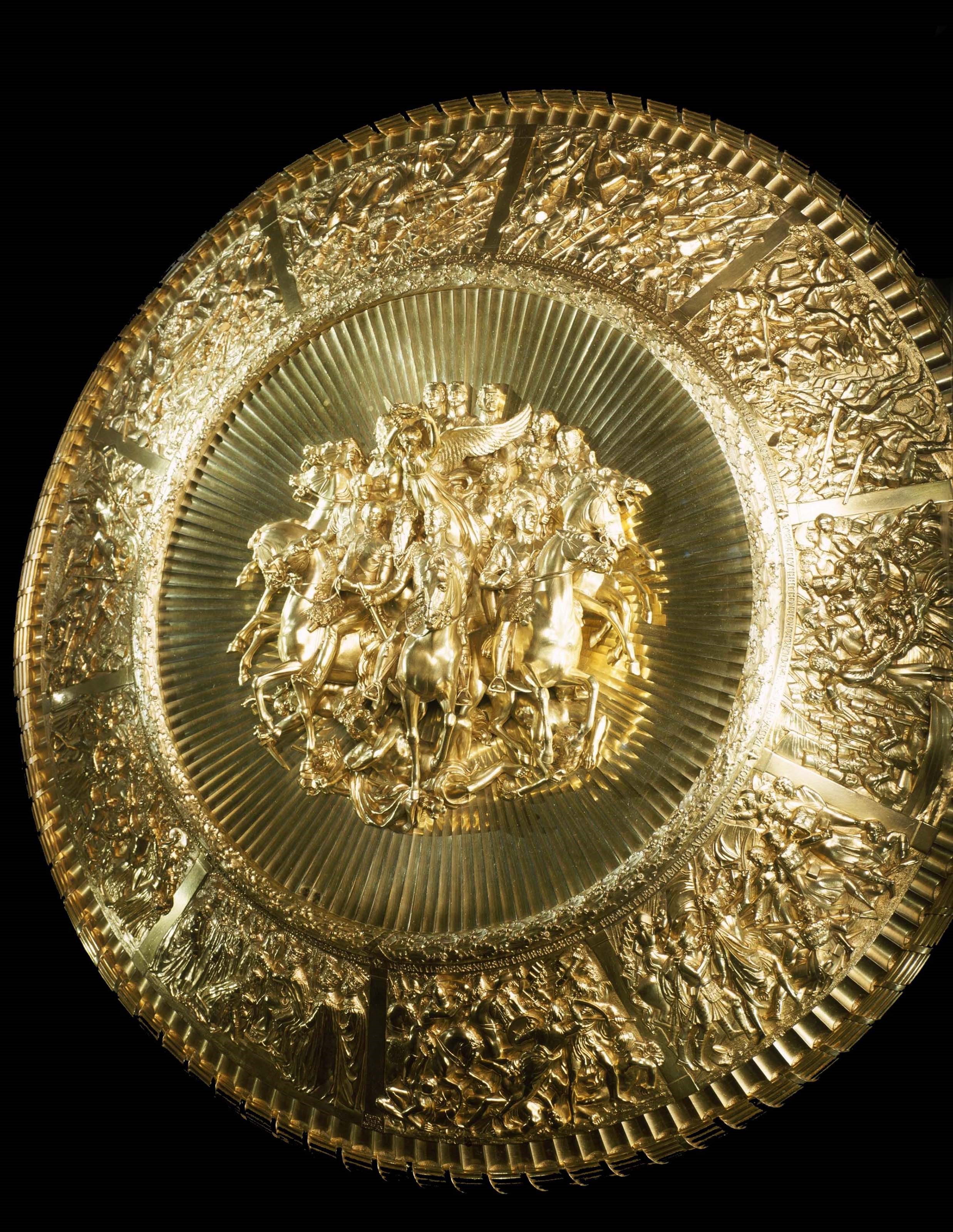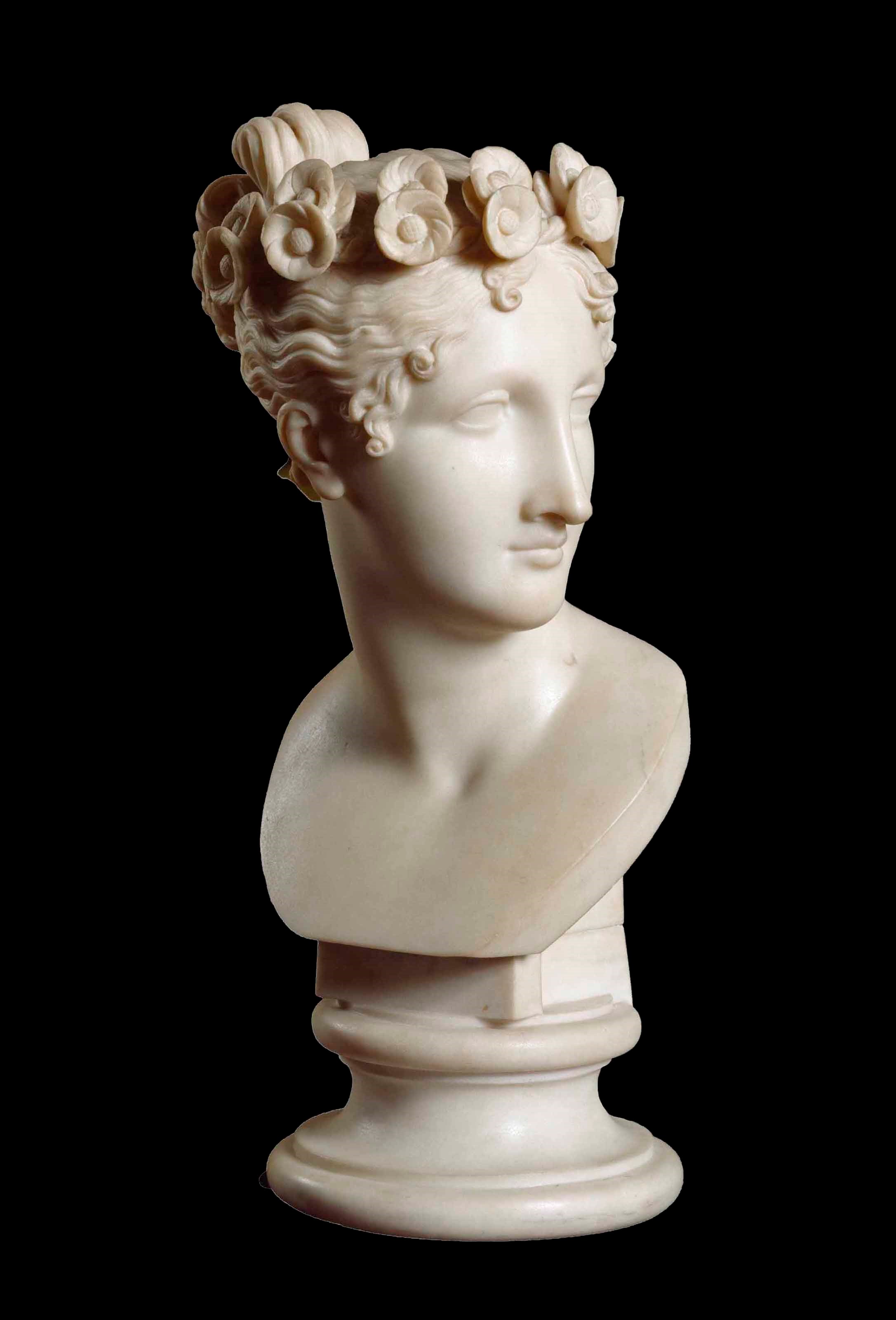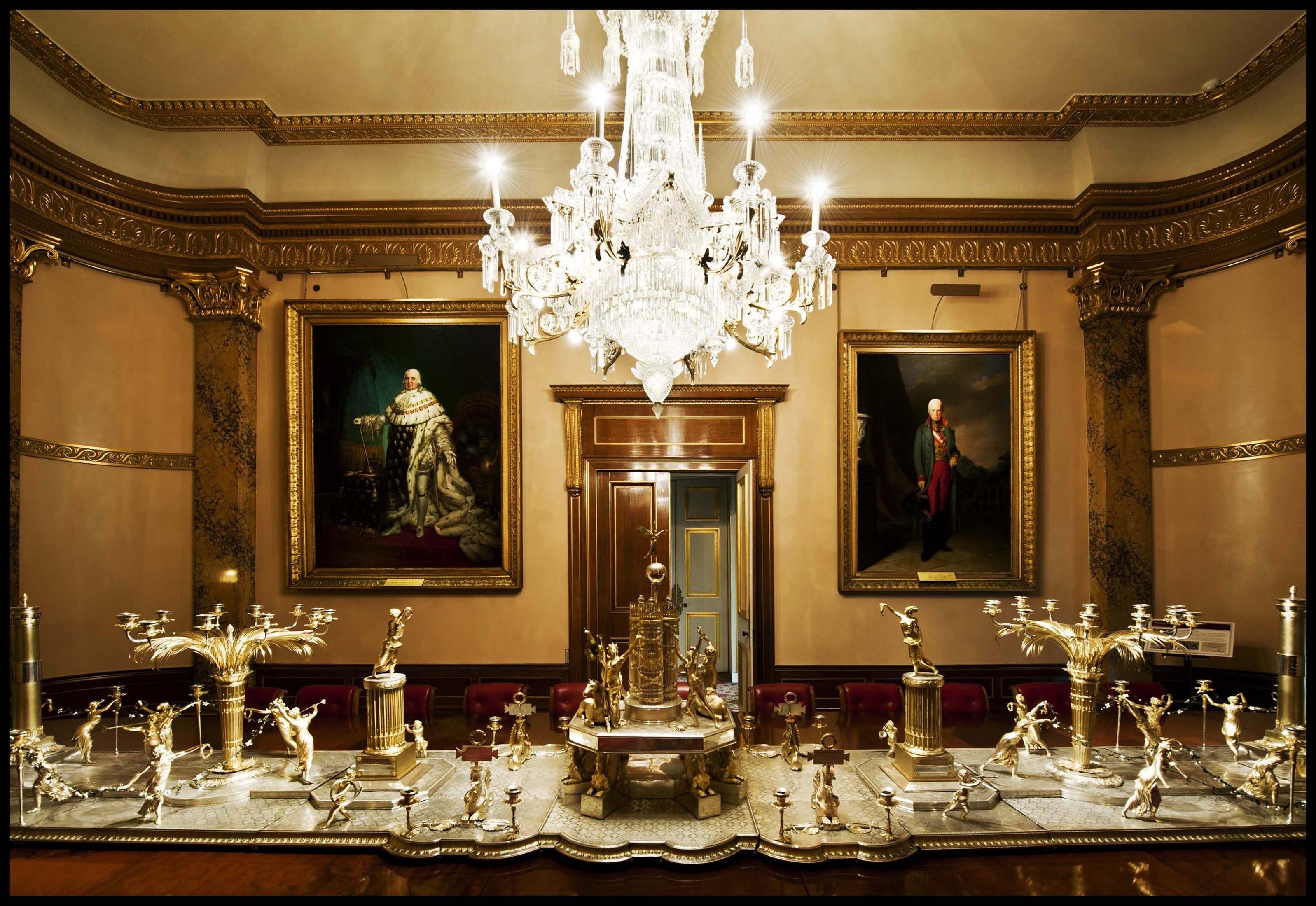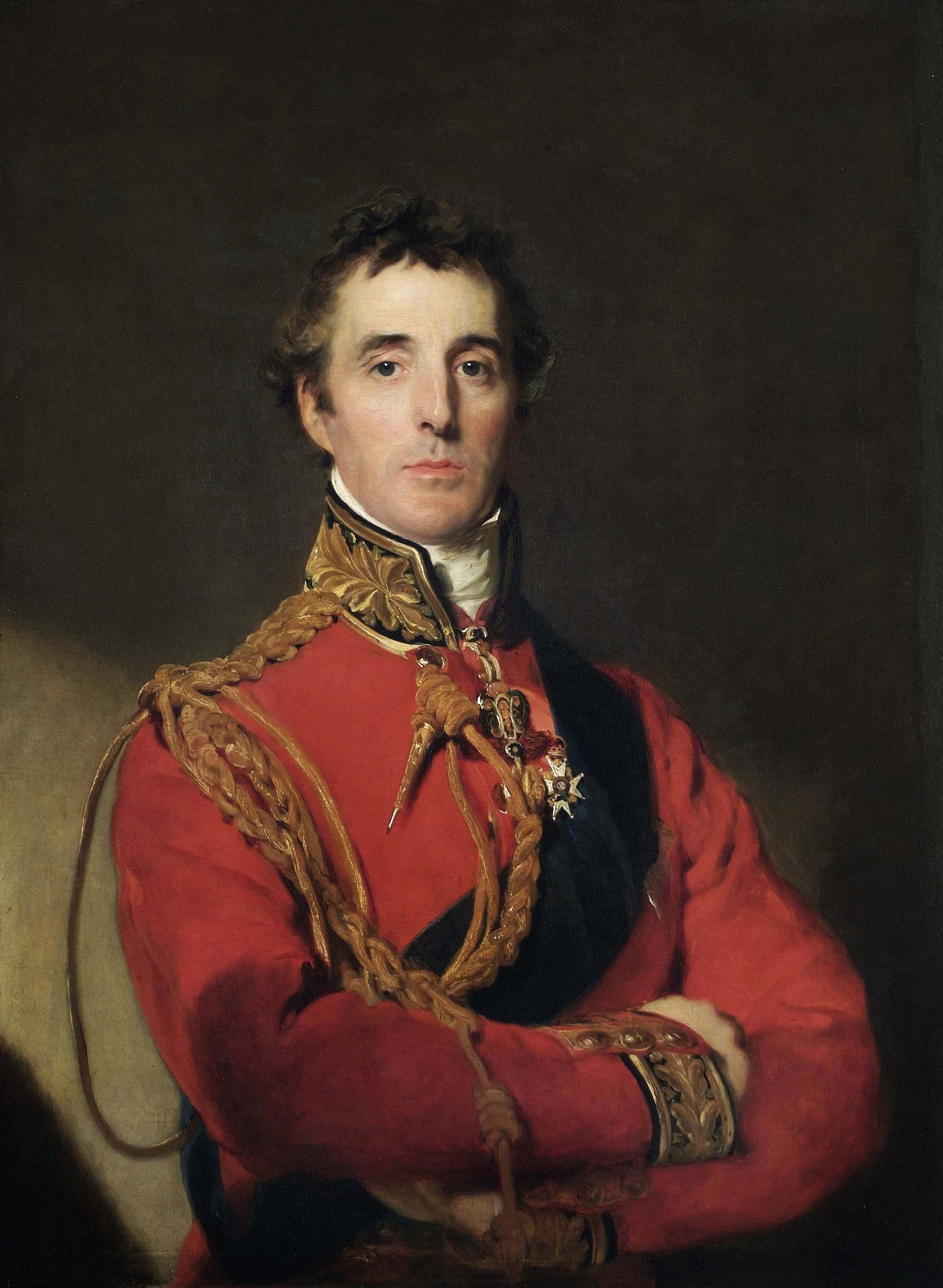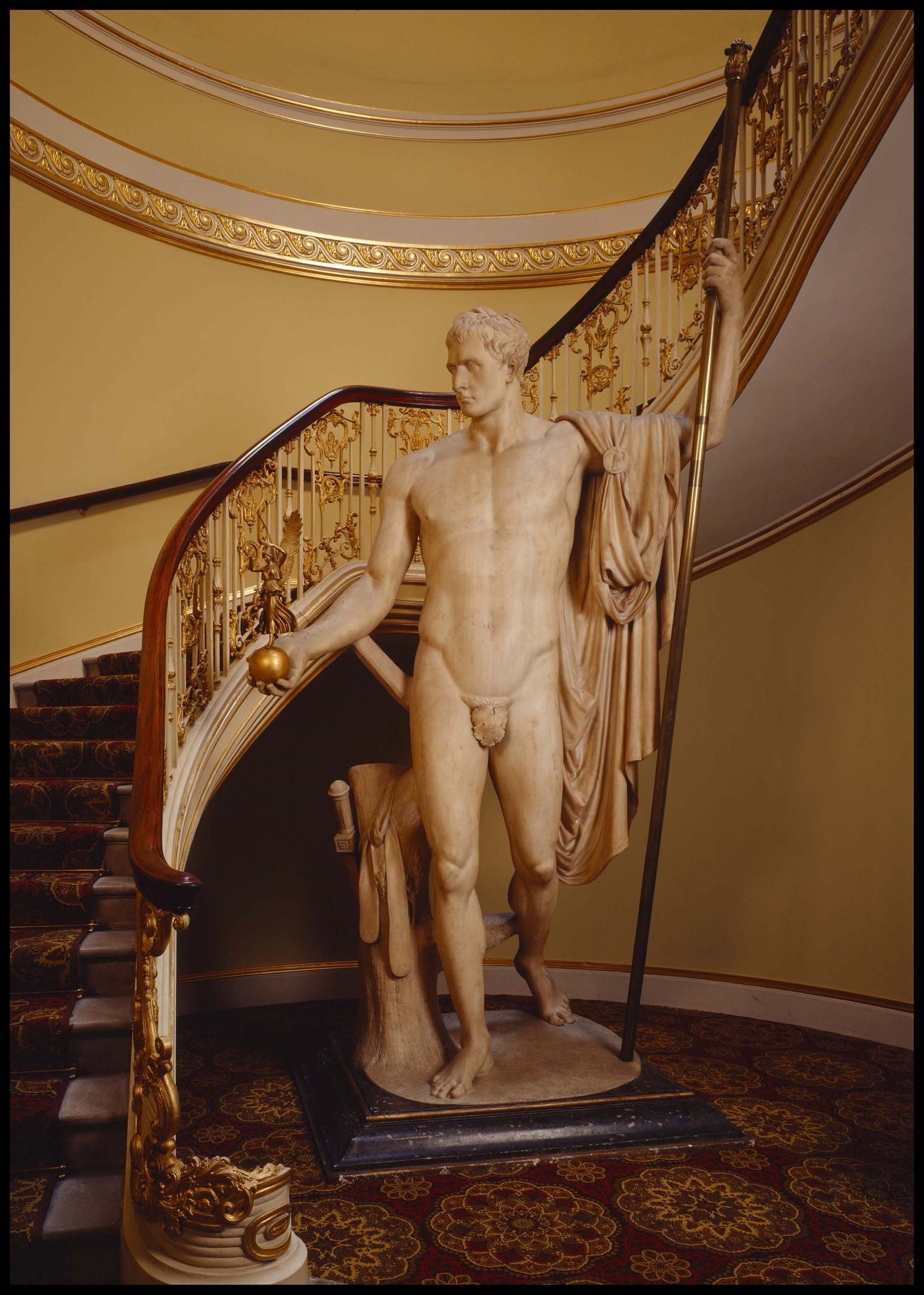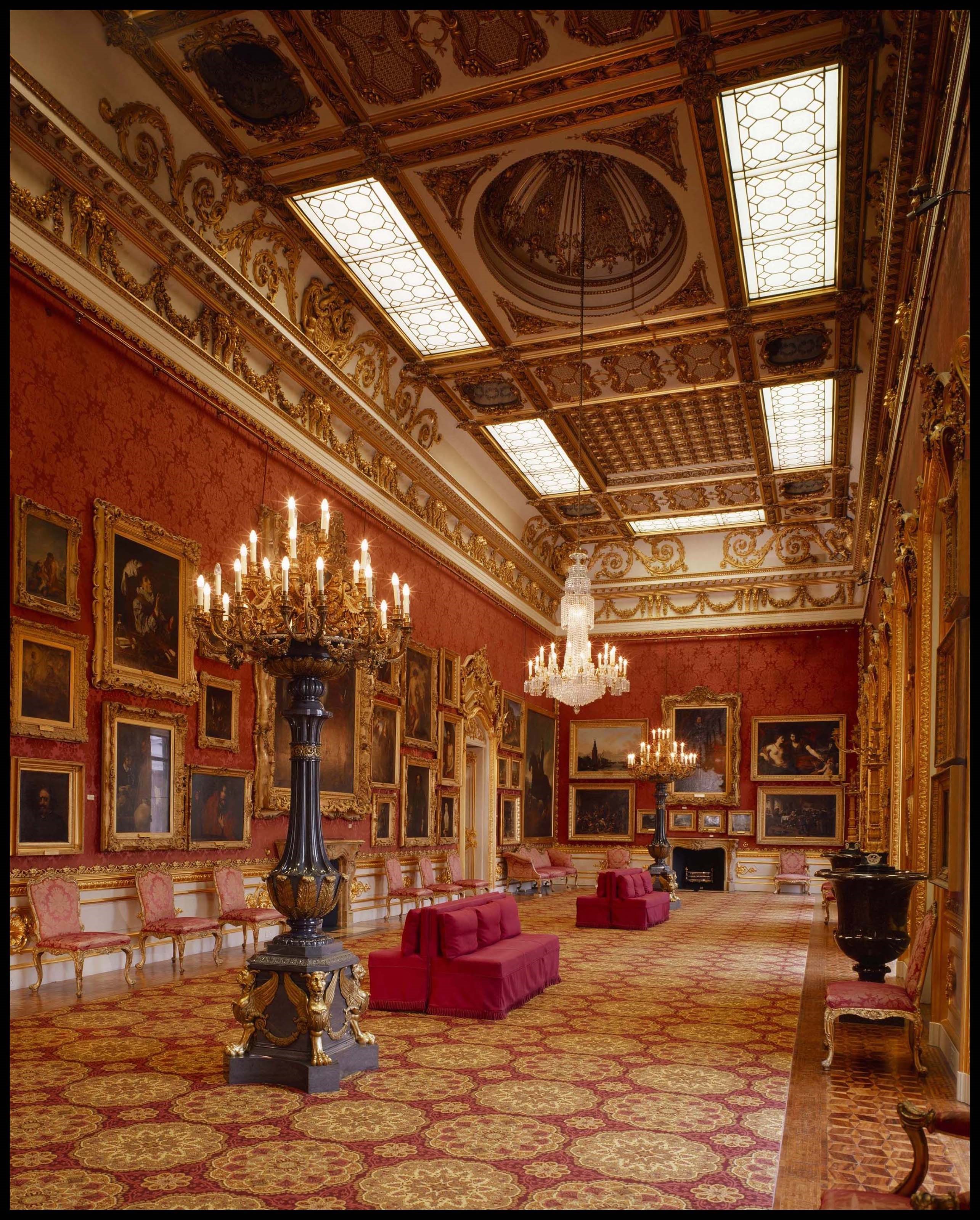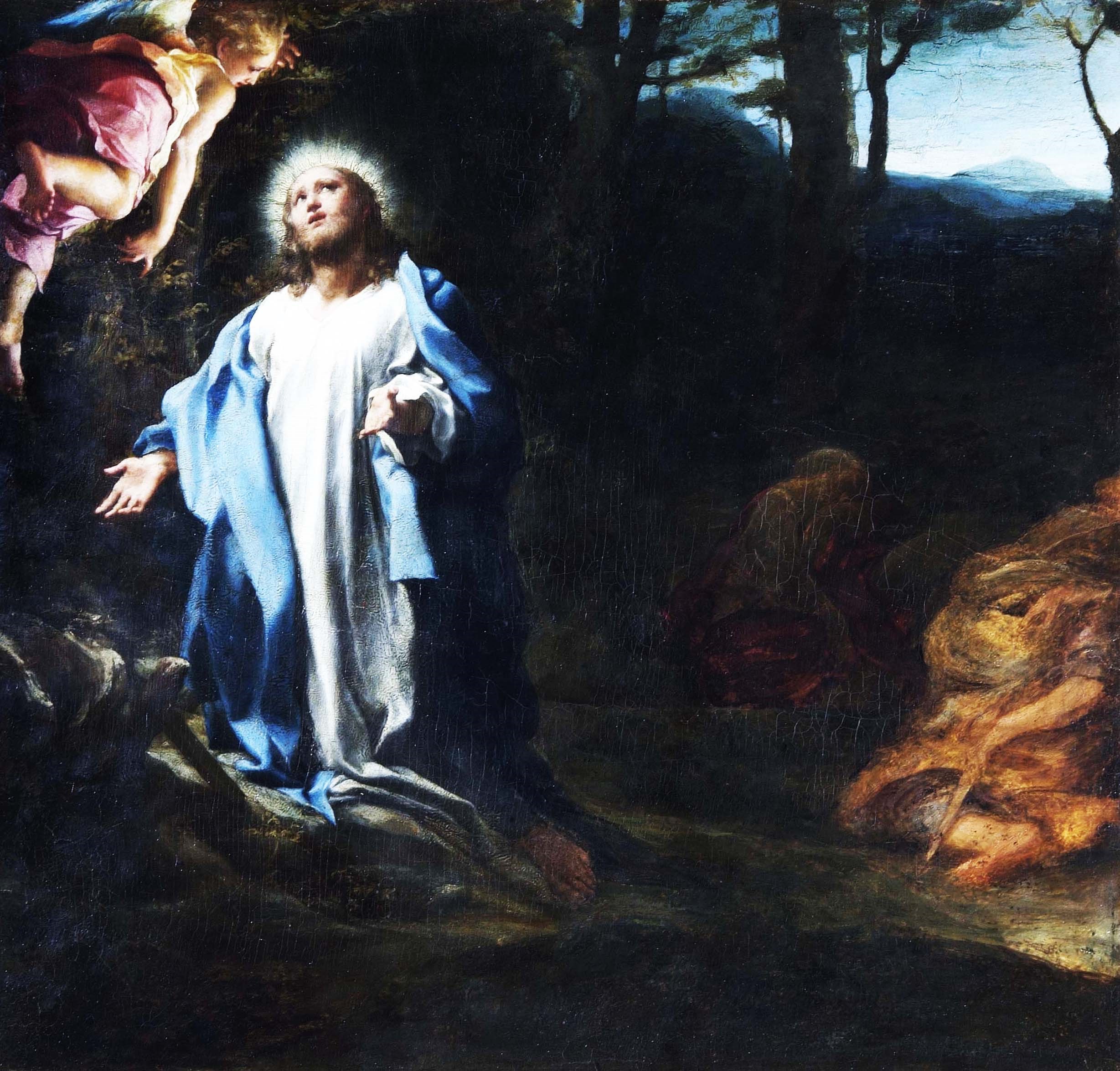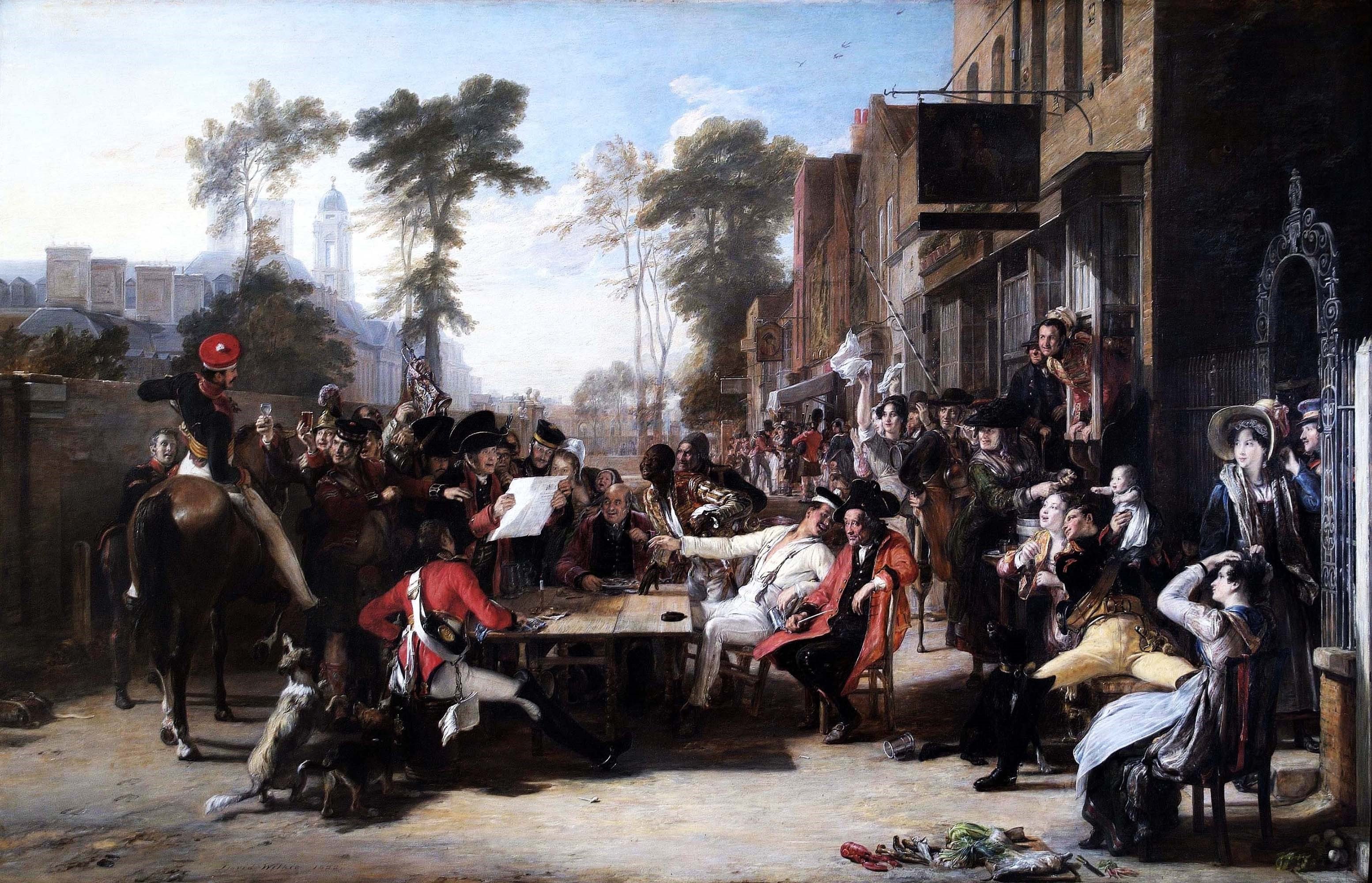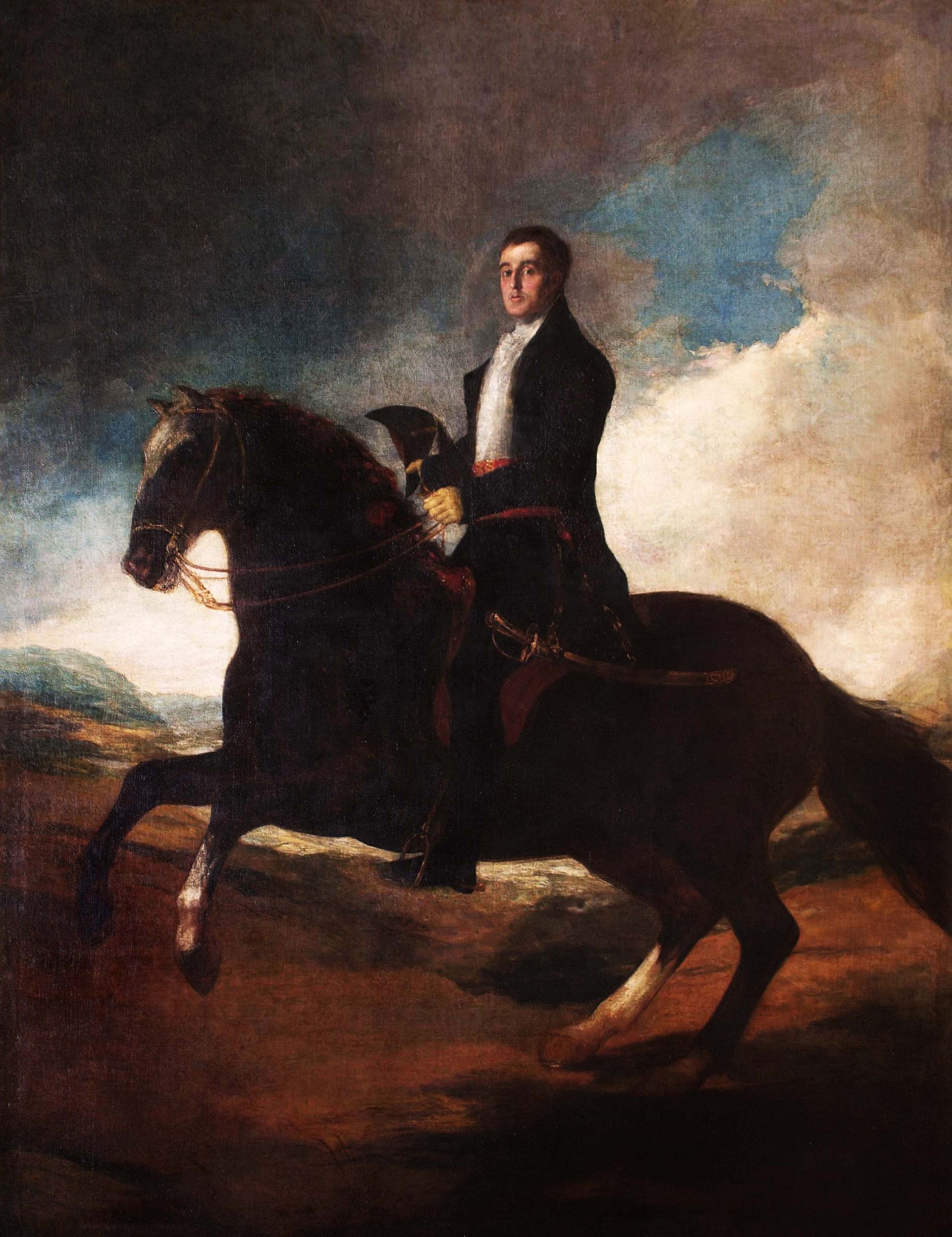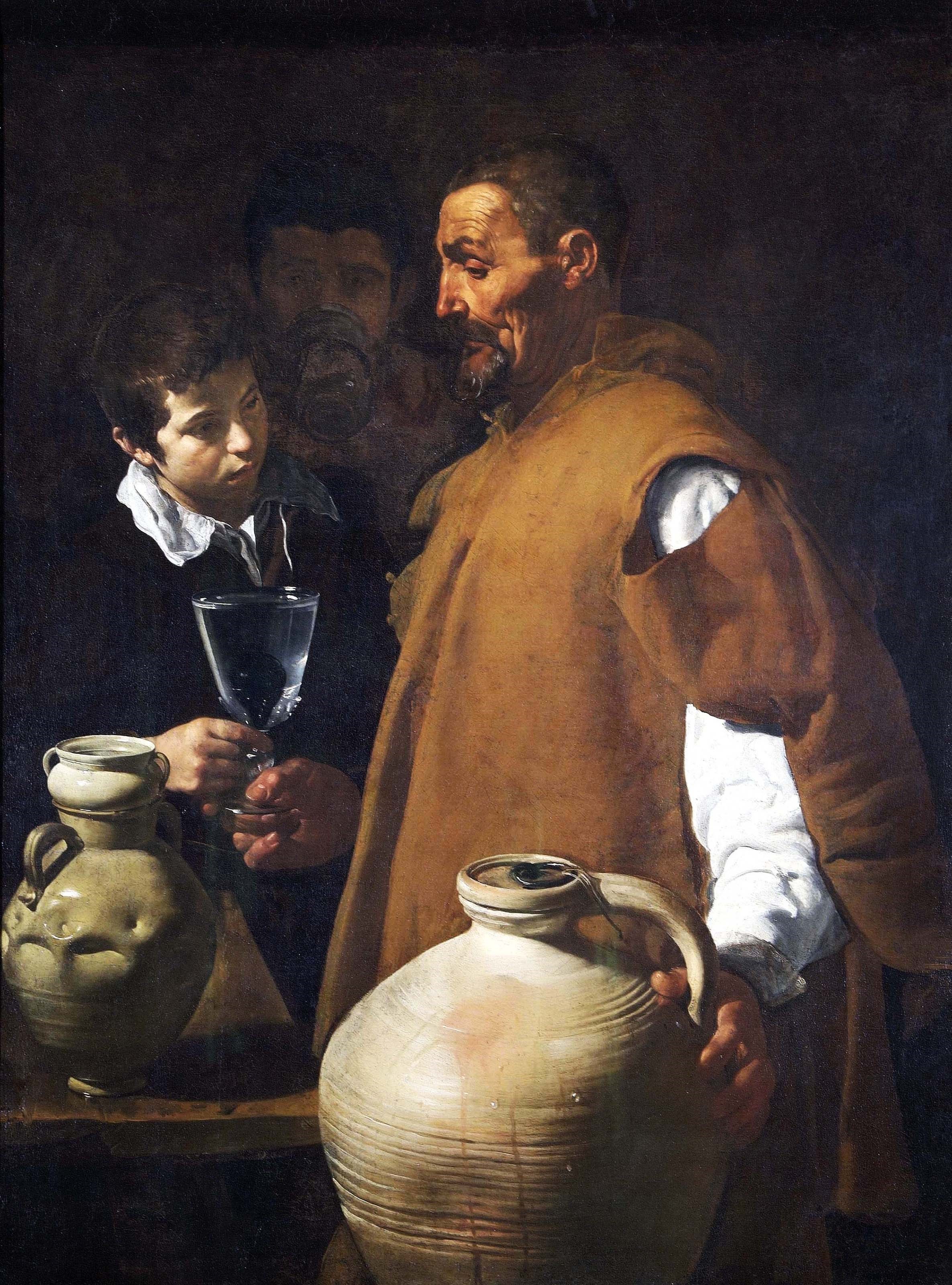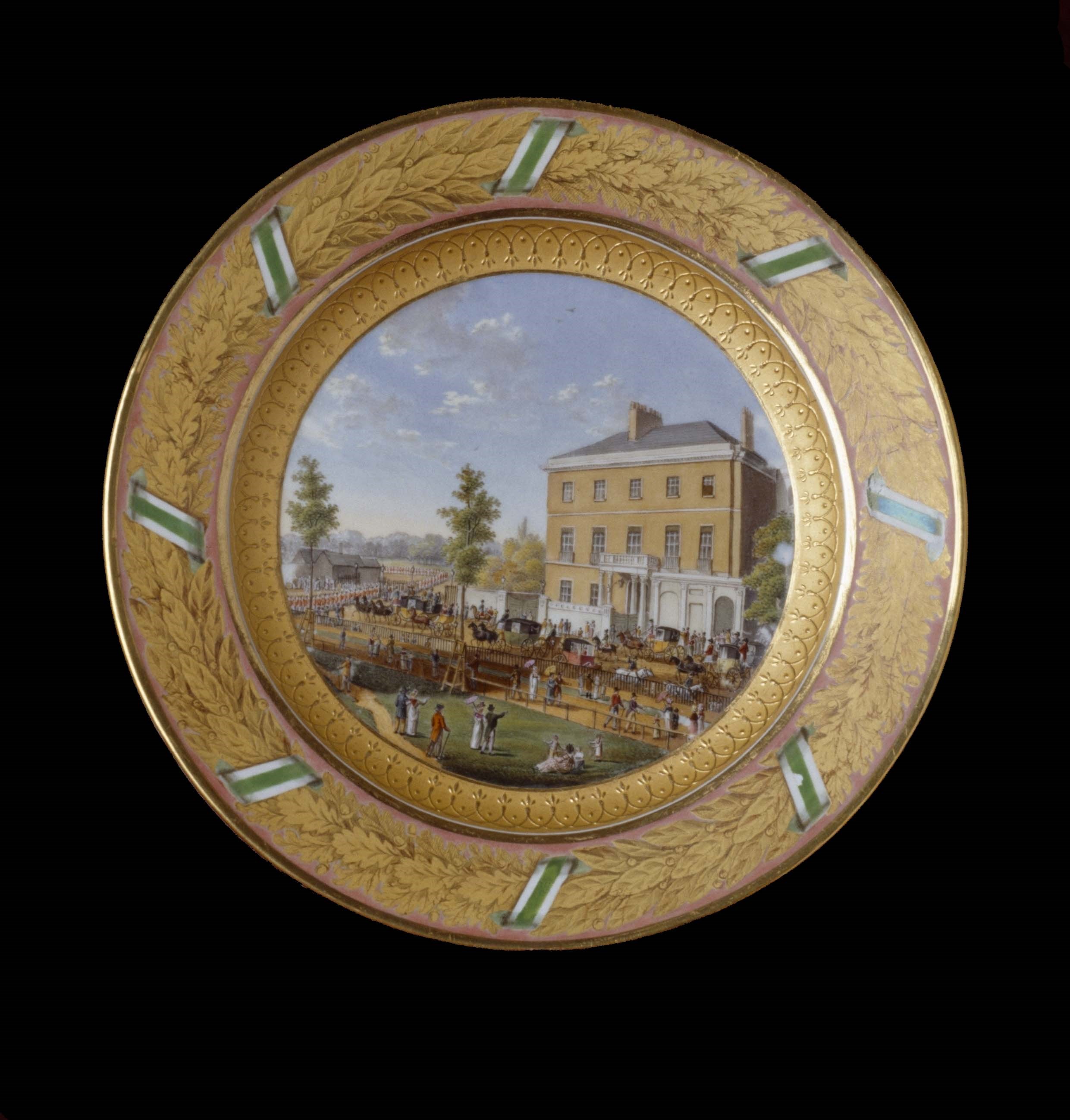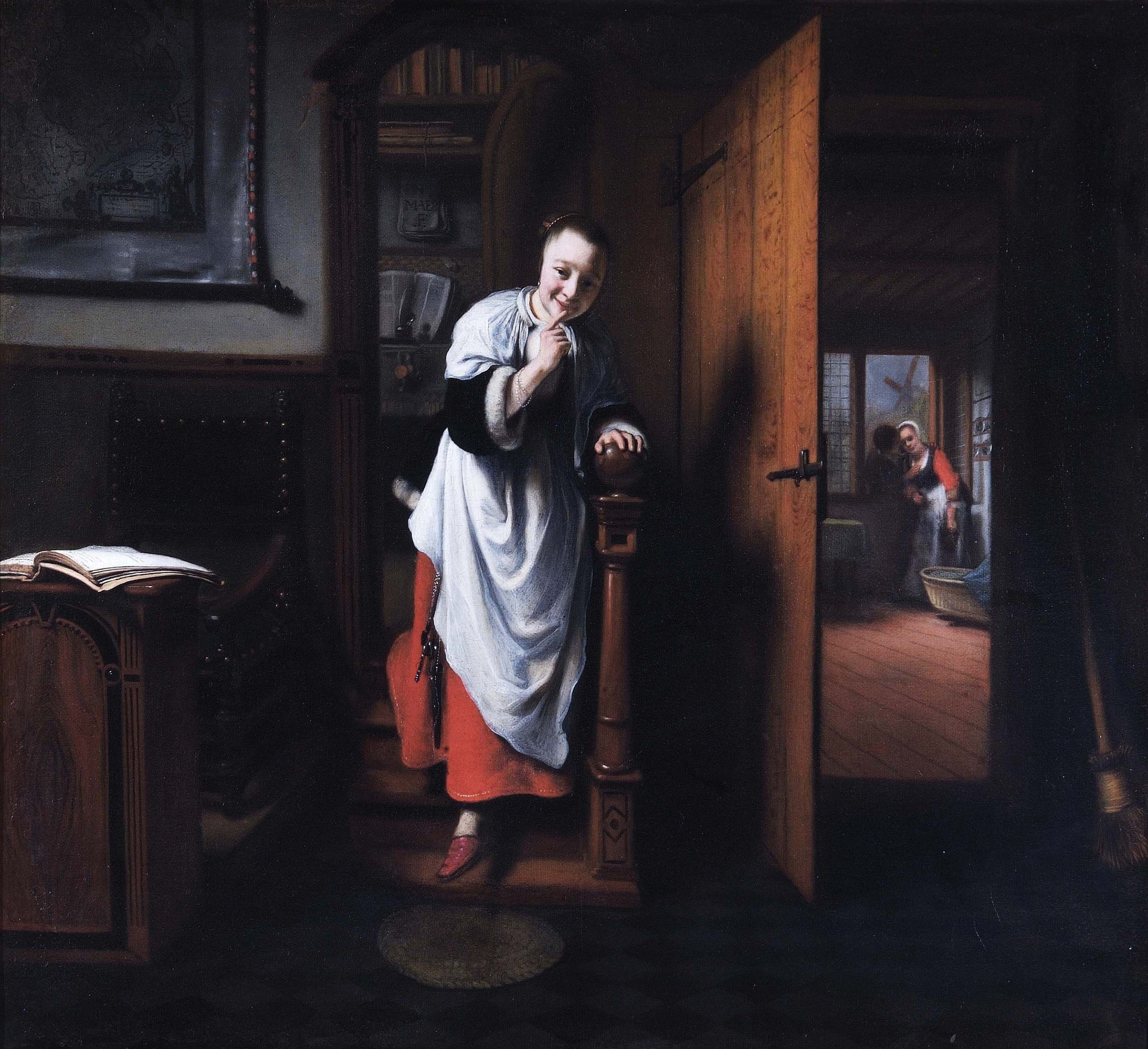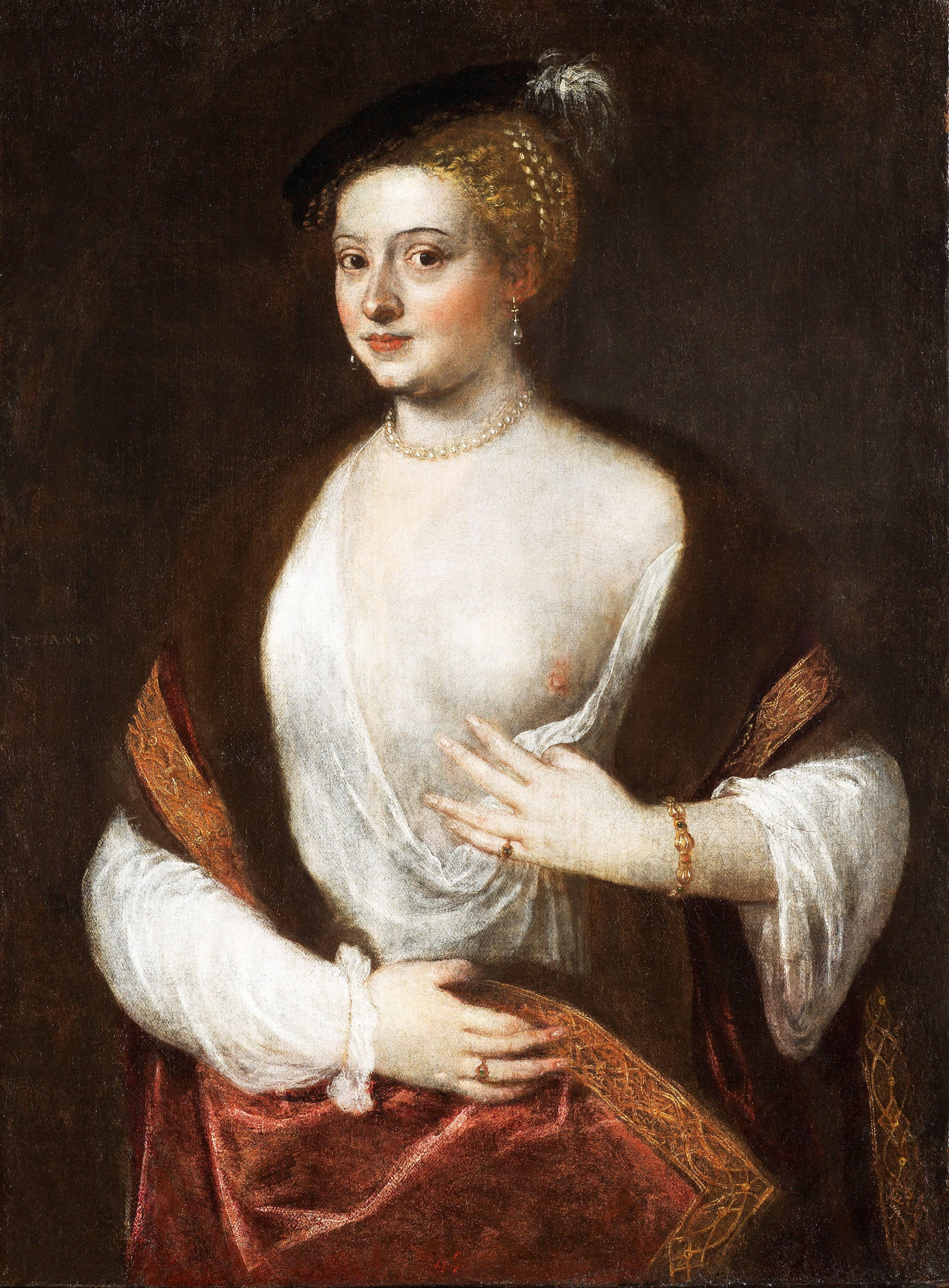After the Battle of Waterloo, Wellington also bought some important old masters. He purchased Dutch paintings when a Parisian financier sold off his collection at the Le Peyrière sale in 1818. From this period onwards he also collected modern portraits, mostly of his comrades-in-arms and by Thomas Lawrence. His most important commission was Sir David Wilkie’s Chelsea Pensioners.
The Duke’s collection also contains important pieces of Meissen and Sèvres porcelain and a large assortment of silver.

